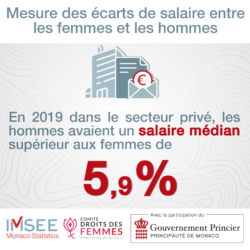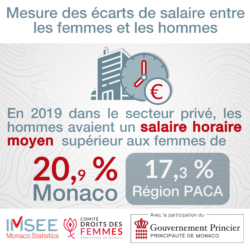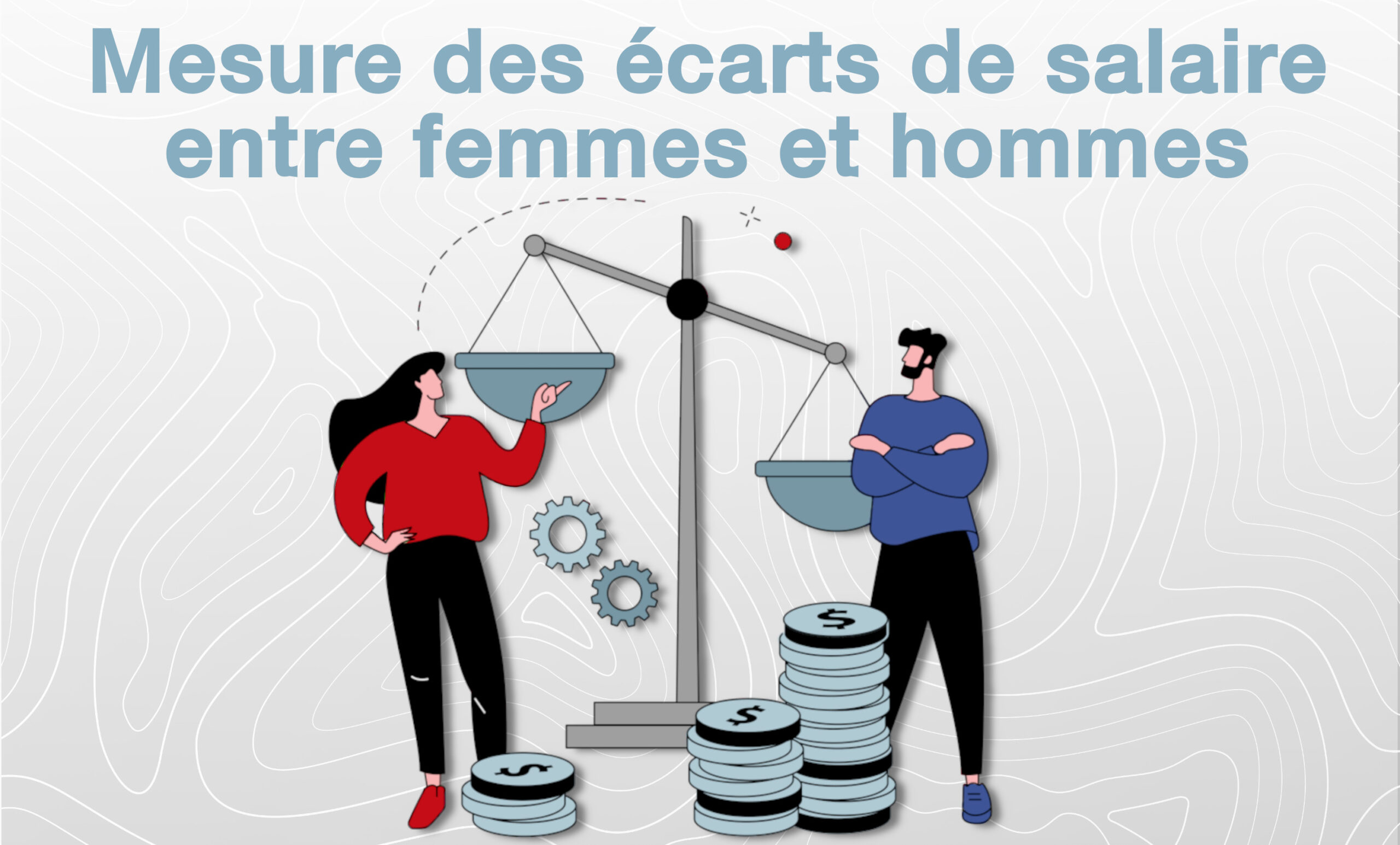When it was founded in 2018, one of the Committee’s first acts was to commission a study from IMSEE, the Monegasque Institute of Statistics and Economic Studies, to measure the gender pay gap for men and women working in the Principality. To do that, IMSEE teamed up with its French counterpart INSEE and devised a solid scientific method, approved by its scientific board. Rather than comparing individual salaries between men and women in the same jobs, IMSEE’s study took a general approach. To take account of the specific context of Monaco and its population, the study was split into two broad categories: Public sector and private sector.
- The public sector part of the study used data from the Government’s Human Resources and Training Department,
- while the figures for the private sector came from Monaco Social Security Funds
The study used the figures for 2019, to ensure the findings were not distorted by the impact of the Covid pandemic.
Public sector

There is generally a good gender balance in the public sector. In the last ten years, more and more senior roles (ambassadors, ministers, chiefs of staff, etc.) have been going to women, who currently occupy 47% of these strategic positions. The average salary is 0.7% higher for women than for men. This is explained by the fact that a higher proportion of women occupy managerial positions (Category A). Although these numbers are encouraging, they should be treated with a degree of caution, as within each individual category of civil servant, the differences favour men (15% in category A, 8% in category B, 9% in category C).
Private sector


The figures for the private sector are more mixed. Monaco is among the better performers when it comes to median salaries, with a gap of 5.9% in favour of men. This puts the Principality well ahead of the OECD average of 12.6%, and tenth among all OECD countries. However, there is clear room for improvement in average gross monthly salaries (where men have a 28.5% advantage) and average hourly salaries (20.9%). By comparison, in the Provence-Alpes-Côte d’Azur region of southern France, the average hourly salary for men is 17.3% higher than for women.
Read the study
The full study is available to read. It contains a wealth of other information, giving a comprehensive picture of gender pay inequalities in Monaco. It can be downloaded at the following address: Mesure des écarts de salaire entre hommes et femmes / Publications / IMSEE – Monaco IMSEE
 Exit site
Exit site

